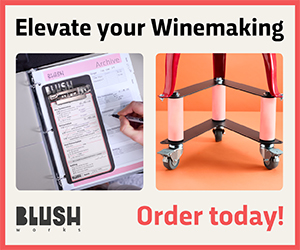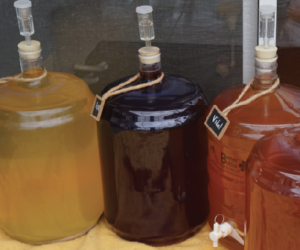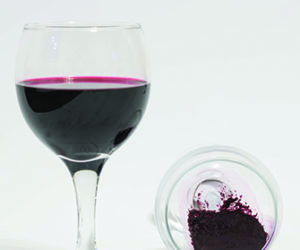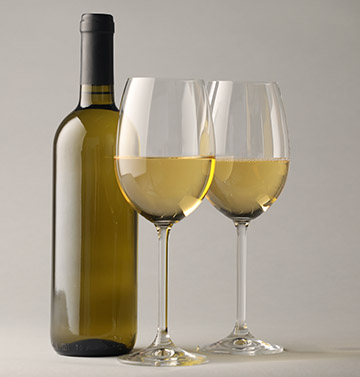
Winemakers and business owners alike know that some processes, while tedious, are essential for success. In the same way taxes ensure financial stability (even if begrudgingly), wine filtration ensures your wine is clean, stable, and ready for the world to enjoy. We’re going to roll with this analogy to help understand the importance of filtration, so bear with me as it’s going to tie together.
Consider it: Taxes and filtration involve removing excess, ensuring clarity, and creating a structured path forward. Like how avoiding taxes comes with consequences, skipping the filtering step can leave you with a cloudy, unstable wine or make your wine prone to unwanted surprises that may come in the form of off-flavors and sediment precipitation down the road.
The Sediment of Winemaking = The Deductions of Taxes
Sediment and unwanted particles naturally build up throughout the winemaking process. Whether it’s dead yeast cells, grape solids, or tartrate crystals, leaving these unchecked can lead to a hazy or compromised wine. No one wants to drink a hazy wine unless you’re more into the “natural” wine trend, but even with those, there should be some filtration for wine stability purposes.
In taxes, unorganized expenses and unclaimed deductions can clutter your financial picture, making it difficult to see the actual numbers that matter. Like a well-filtered wine, a well-organized tax filing ensures clarity and stability.
Fining & Pre-Filtration = The Itemized Deductions of Winemaking
Before you run your wine through a final filtration, fining agents should be used to remove specific compounds that might cause off-flavors or haziness. This is like itemized deductions in tax preparation — sorting out what belongs and needs to be removed to refine the outcome. Too much protein haze? Use bentonite. Too many business expenses? Time to categorize them correctly. Unwanted tannins creating bitterness? Egg whites can smooth things out, like adjusting your financial strategy to reduce unnecessary costs. The better your preparation, the easier the final step will be.
Final filtration = Filing Your Taxes
Once you’ve settled everything in the tank, it’s time for final filtration — a crucial last step before bottling. The final filtration is when everything comes together, like submitting taxes to the IRS. You have different levels of filtration, just like you have other tax strategies.
Coarse Filtration (Like a Simple Tax Return): This method removes large particles but leaves some natural character. It is best for those who like a more “rustic” approach.
Polished Filtration (Like a Tax Accountant’s Deep Dive): The most efficient way to get a clean, polished wine while retaining flavor.
Sterile Filtration (like an Audit-Proof Tax Filing): This ensures absolute clarity and microbial stability, leaving nothing behind to ruin your final product.
Figuring Out Your Filtration Needs
Selecting the grade and style of filtration for your wine is a crucial step in the filtration process. While turbidity — measured in Nephelometric Turbidity Units (NTU) — indicates the cloudiness of wine, it doesn’t fully represent filterability due to proteins that can clog filters without affecting NTU readings. The suggested turbidity of wines is 26–40 NTU.
Now that I’ve thrown acronyms, taxes, and the idea of multiple rounds of filters at you, let’s pause for a second and remember: This is your wine. You do with it what you want.
Unlike if you don’t pay your taxes, the government will not come after you if you have a few floaties in your wine. However, your friends and family might. So, let’s get into the nitty-gritty of filtering your wine.
There are a few cost-effective options for the home winemaker or small winery. A plate filter is my favorite method for winemakers who don’t make sweet wines. The plate filter is the original and most widely used filtration system in the world. It is a cost-effective product and (usually) made to last. The other good option is cartridge filtration, which is also very effective. Let’s take a closer look at both methods:
Plate Filtration
A plate filter in winemaking is like manually filing your taxes using paper forms and a calculator. It’s an older method that is effective but labor-intensive. It’s bulkier and requires setup. Just like pulling out all your receipts, tax forms, and maybe even an Excel spreadsheet, setting up a plate filter takes time. You must insert the filter pads, ensure they’re wet, and line everything up correctly.
Each filter pad is like a different tax form — if you need different levels of filtration, you stack different pads, just like other tax forms serve different purposes (1040, W-2, 1099, etc.). It’s messy, but it gets the job done. Wine can leak between pads if they are not sealed perfectly. It’s best for filtering large volumes at once.
A few different sizes work for home winemakers and small wineries. Three-plate, 10-plate, 20-plate, and 40-plate filters might work for your winemaking setup. If you purchase a 20- or 40-plate size, request an inverter plate model to make your life easier. An inverter plate allows you to run two different styles of pads at once, saving you a lot of time and wasted wine.
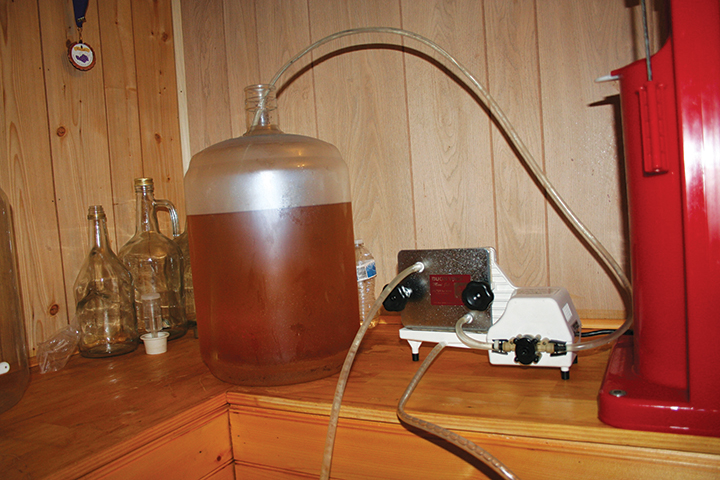
Estimated Gallons (and Liters) Per Hour for Plate Filters
3-plate: 50 gal. (190 L)/hr
10-plate: 79 gal. (300 L)/hr
20-plate: 158 gal. (600 L)/hr
40-plate: 316 gal. (1,200 L)/hr
Choosing Pads for Your Desired Filtration Level
Rough Filtration (5 microns) — For all wines, this micron level removes the heavier, more significant solids that might be present. Use after 2–3 rackings so the wine is pretty clean of sediment and filters do not clog too easily.
Polishing Filtration (1–3 microns) — For making your wine sparkle. Polished is used mainly for dry white, rosé, and fruit wines. Use this pad days before bottling red wine. Use this pad one month after the coarse filter on white wine.
Sterile Filtration (0.45 microns) — These are used to remove yeast and bacteria. They help protect from harmful bacteria and possible refermentations. A fine filter will clog quickly if your wine is too cloudy. Always pre-filter with a coarser filter size first.
Use with white and rosé wines and anything sweet.
Setting Up a Plate Filter
Each pad has a rough and a smooth side. The pads need to be inserted in a rough, smooth, smooth, rough pattern, starting with the rough side facing the end plate at the pump side. You insert one filter pad per plate. Each plate is equipped with barbs and gaskets. I’d suggest keeping extra gaskets on hand in case you lose them over the years.
Do not leave any spaces between the plates without a filter pad. If you don’t have enough pads to fill the filter, remove the appropriate number of plates. If you don’t fill the filter fully with pads you will have an excessive amount of leakage. Once assembled, tighten the handscrew to seal the filter during operation. The handscrew may require significant force to prevent leaks.
Before filtering your wine, run a gallon (3.8 L) of sanitizing solution through the system to remove contaminants and wet the filter pads. I use an SO2 and citric acid solution with 2.5 tablespoons of metabisulfite and one tablespoon of citric acid per gallon (3.8 L) of water.
Pro Tip: Run the solution through your pads; it sanitizes them and double-checks for leaks. After sanitizing, run water through the filter and drain before running wine through.
With the filter pads set up and wet, start the pump, ensuring the pressure does not exceed the maximum recommended for your specific filter pads (typically 45 PSI for rough and polishing pads and 21 PSI for sterile pads). Monitor the process for leaks or pressure fluctuations. If you keep your pressure between 15–20 PSI, you should not have issues due to pressure.
Cleaning & Storing Your Plate Filter
After use, take the filter apart and clean all pieces thoroughly. Double-check that all filter parts are dry before storage to prevent microbial growth or corrosion.
Now that we have covered plate filtration, let’s move on to the other popular option — cartridge filtration.
Cartridge Filtration
A cartridge filter is like using tax software or hiring an accountant — it’s cleaner, more precise, and streamlined. Instead of stacking multiple filter pads like paperwork, you insert one cartridge, and it does the work, just like tax software auto-filling numbers or an accountant handling the fine details. Better for fine-tuned work — Cartridge filters are the way to go if you need sterile filtration (0.45 microns or smaller) to make sweet wines.
Cartridge filters have fewer leaks and are less prone to mistakes, similar to how software reduces human error in taxes. Cartridge filtration avoids issues like contamination or clogging and is one of the most effective and precise ways to remove unwanted particles, yeast, and bacteria. It’s widely used by wineries, home winemakers, and on commercial bottling lines.
How Cartridge Filtration Works
Cartridge filtration is a pressure-driven method where wine passes through a specially designed filter cartridge inside a housing unit. Think of it like a coffee filter but much more advanced. Instead of catching coffee grounds, the filter traps particles, yeast, and bacteria from the wine, making it more transparent and stable. Cartridge filters rely on pressure from a pump to push wine through the system. The tighter (or finer) the filter cartridge, the smaller the particles it removes. Cartridge filters are commonly used before bottling because they provide one last level of cleanliness before the wine is put into the bottle.
Setting Up a Cartridge Filtration System
Setting up a cartridge filtration system is straightforward but requires careful handling to avoid contamination. Start by gathering your equipment, beginning with a filter housing that fits the filter cartridge. A pump helps push the wine through the filter. If you’re using a pressurized system, CO2 or nitrogen can also be used.
The heart of the system — the cartridge — determines how fine the filtration will be. Insert the correct cartridge (I’ll explain the different types in a moment) and ensure the gasket or O-ring is in place to create a tight seal. Close the housing and secure it tightly.
You must prime the system before running your wine through the filter. Add water or a sanitizing solution to ensure the filter is properly seated and ready to go. To avoid contamination, sanitize everything before filtering. Run a no-rinse sanitizer (like potassium metabisulfite solution) through the housing and hoses, and rinse well if necessary.
Begin Filtration
Start with a coarser cartridge (if you’re using multiple stages). Turn on your pump or apply pressure and slowly push wine through the system. Monitor pressure levels as too much pressure can damage the filter. If you’re doing sterile filtration, keep everything sealed to prevent recontamination.
Switch cartridges for finer filtration (if/when needed). A lot of wineries will run multiple filter sizes at once to cut down on time. Sometimes people will filter right into the bottle. This works great if you have already done the proper coarse filtration first, otherwise you could clog your filter.
Cartridge filters come in different micron sizes related to the size of particles they remove. The lower the micron number, the finer the filtration. The most common are 5, 1, and 0.45 microns, used in the same way as described in the plate filtration section.
Cartridge filtration is used not only in winemaking but also when filtering water. And it is one of the most effective ways to filter wine before bottling. It helps improve clarity and microbial stability without stripping the wine of its flavor components. Choosing the right filter size and following the setup and sanitation steps ensure your wine is sparklingly clear, stable, and ready for drinking!
Wine Filtration Loopholes
Just like how that detailed accountant can help you find those nooks and crannies to get you the best tax return possible, there are a few filtration practices that can help make filtration easier for you:
Utilizing Enzymes
Enzymes help break down pectins that can lead to different types of issues. This is an especially helpful tool for fruit wines that often have pectin hazes. Enzymes can be added during fermentation, 6–8 weeks before filtration, or can be used in conjunction with filtration. These products are helpful tools to make your life and winemaking a little easier (read Bob Peak’s “Techniques” column on pectic enzymes for more on this subject).
Filterability Testing
There are wine labs that will run a filterability test on your wine. This can be useful if you think your wine might give you trouble during filtration. The test will provide you with results essentially telling you if your wine can or cannot make it through a 0.45 micron filter. This is different from a turbidity test, which can give you the NTUs of your wine.
In Conclusion
No matter if you are bottling your latest vintage or preparing to file your returns, the same thinking applies — taking the proper steps now ensures a smoother future. You have options of how to get it done, and when you’re sipping your brilliantly clear wine in the future, you’ll be glad you put in the extra effort prior to bottling.
